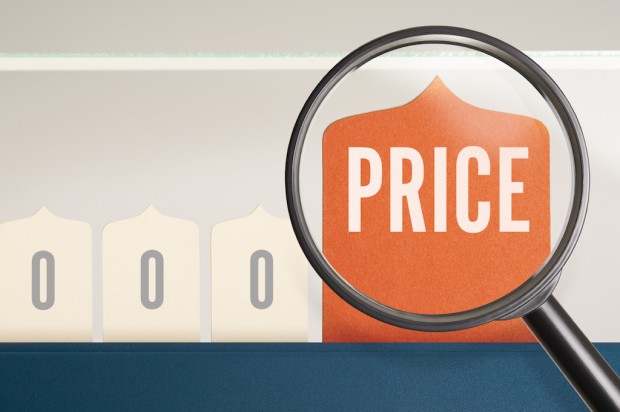You don’t have to be Bob Barker to know when the price just ain’t right. Products gather dust on shelves and businesses shutter every day because their basic pricing structure is faulty.
To help you avoid the most common pricing mistakes, Tara Gentile — business strategist, creator of the Customer Perspective Process, and ambassador of the You Economy — sat down with us to discuss the pricing errors that freelancing creatives and entrepreneurs typically make. She pulled these tips from her class, Value Pricing and Business Models for Creative Entrepreneurs.
Here are the top five “no-no’s” when pricing your product or service. “Come on down!”
1. Pricing Too Low
People often think that low prices equal more sales. However, when you set the price too low, you essentially position your product or service at the “bargain basement” of the market. By doing this, two things happen: you associate your brand and product with low quality and you attract the wrong customers. With the first, customers may assume something is wrong with the company, the product, its credentials — they assume it’s not high-quality. This positions your product poorly and leads to less sales. With the second, low prices also put you into the sticky situation of attracting clients who make decisions based on price rather than quality. These types of customers tend to be the most demanding customers and also the least loyal — always looking to nickle and dime, rather than really truly get value for the service they’re contracting to buy.
2. Pricing for Pay, Not Profit
Creative “solopreneur” professionals often don’t allow for profit in their businesses. When you set prices only with your salary in mind, what you aren’t doing is pricing to invest in your business and allow for growth activities. These growth activities — marketing campaigns, hiring additional help, developing new products, training and certification programs — these are the things that will get you from a business that is slowly chugging along to a business that is thriving.
“It’s not just about paying for your labor,” says Tara, “It’s about creating an excess and abundance with the prices that you set.” Don’t aim for a trickle of business. Aim for abundance.
3. Setting a Narrow Price Spread
Another mistake that people often make is not looking at the full spread of their services. When you are offering multiple products or services, customers evaluate a listed price relative to the prices listed for the rest of the products you are offering — they enter a game of “The Price is Right” for this vs that. If you aren’t differentiating your products enough through price, you are inhibiting your customer from making an easy purchase decision.
For example, you are a life coach offering three levels of service: a small ebook, an online course, and one-on-one services. If these things are often priced very similarly ($20, $30 and $80), it becomes more difficult for your customers to decide what they want to purchase from you, especially if it’s their first purchase and especially if the products all have similar outcomes.
“Price is one way we help a customer make decision,” says Tara, “People are trained to know that each type of thing should cost different amounts relative to each other, which means you need the spread.” If your products use different materials, require different amounts of time, or involve varying degrees of effort, you need to use price to differentiate them and make your products and prices make sense in terms of the value for your customer.
4. Underestimating Labor Costs
Another big mistake people make is assuming their labor costs are the same as when they were working a full-time job. The reason this is an error is that labor costs don’t cover a host of expenditures that you’ll be making as a business, like administrative overhead, the marketing and business development costs of attracting new clients and customers, health insurance, etc.
“When I was working a retail management job, I thought my labor was valued at $14 an hour,” remembers Tara, “When I started freelancing, $25/hour sounded amazing, but it quickly became clear to me that a living wage for a freelancer is at least $50/hr, and closer to the $75-100/hr range.” That top range is particularly important if you are looking to create some leverage in your business rather than do one-to-one client work.
According to Tara, this point should be driven home for makers and crafters. “Makers are especially bad at this” she says, “they love to pay themselves less-than minimum wage.”
5. Forgetting Hidden Labor
Another labor-related mistake in setting prices is failing to account for other people’s labor — both the labor you are currently contracting or the future labor you will likely need soon.
One way companies grow and gain leverage is by hiring contractors for aspects of the business that require specific skills outside the owner’s expertise. Small businesses often hire outside help for design, marketing, sales, and even contract out for providing the service or producing the product you sell. In setting your prices, it’s important to bake these additional labor costs into your business expenses and account for profit-making on top of them.
For more tips from Tara, don’t miss her Value Pricing for Creative Entrepreneurs course on creativeLIVE.



